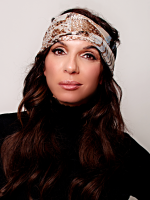Close your eyes and picture America. What do you see? I guess it depends on who you are, but when I close my own eyes, a very specific image immediately appears. It's a black and white photo that dates from before my time, but is embedded in my landscape of family history and mythology. The Rev. Dr. Martin Luther King Jr., seen in profile with a quiet smile on his face, his right arm raised toward the sky and intersecting with the obelisk of the Washington Monument in the background. Behind him, the National Mall is packed with people crowded on all sides of the reflecting pool. It's Aug. 28, 1963 — the March on Washington for Jobs and Freedom — and King is giving his "I Have a Dream" speech.
Zoom out. What we don't see in the photo is the mayhem that framed that moment and the two centuries of history that made it so necessary, but clearly captured in this image is the hope that is possible in America, the urge to come together in pursuit of a dream.
Zoom back in. About 250,000 people were on site that day, having traveled thousands of miles by plane and train, by bus and on foot. Among them were civil rights leaders and legends like Rosa Parks, and celebrities from Jackie Robinson to James Baldwin to Paul Newman. And there was music at the march. Marian Anderson, Mahalia Jackson, Bob Dylan, Joan Baez, Peter, Paul and Mary, Odetta and The Freedom Singers sang spirituals, freedom songs and folk anthems, with the crowd singing along. As a musician who cares quite a lot about hope and peace and freedom, I have always thought how incredibly fortunate those artists were, to be part of such a proud moment in our history.
But maybe I was looking through rose-colored glasses. The other night, I heard an interview with Rita Moreno, who was standing on the steps of the Lincoln Memorial that day, just about 10 feet from Dr. King. She went to the march because Harry Belafonte had invited her, and it was an unforgettable experience that changed her life. But, she said, she was terrified to attend. She'd just won an Academy Award for her role as Anita in West Side Story — the first Latina ever to win an Oscar. Participating in the march threatened serious professional implications; she was afraid she'd never work again, that she'd be blacklisted in Hollywood. She was afraid of the physical violence that so easily could have broken out that day. But, in her own words: "At some point in life, one has to take responsibility … one has to be responsible for what is." She faced her fears, and showed up.
American artists showed up through all the trouble and turmoil of the 20th century. The great American contralto Marian Anderson gave a historic concert for an integrated audience on those Lincoln Memorial steps in 1939, the same year Billie Holiday first sang and recorded "Strange Fruit." Paul Robeson, Pete Seeger and Woody Guthrie faced Ku Klux Klan attacks at a concert for the Civil Rights Congress in Peekskill, N.Y., 10 years later. American musicians from Hazel Scott to Aaron Copland confronted the personal and professional perils of the McCarthy-era blacklists. Joan Baez was just 22 years old when she led the crowd in singing "We Shall Overcome" at the March on Washington. It was only three weeks later when members of the KKK in Birmingham, Ala., bombed the 16th Street Baptist Church, killing four young girls — a horrific act of violence that inspired Nina Simone to write her song "Mississippi Goddam."

This is all history now, captured in photos and film clips and recordings that have acquired the patina of legend. But at the time, there was nothing photogenic about showing up. It was an act of resistance and courage that required the facing of real and present dangers. Judy Collins has told me about menacing encounters on dark country roads when she was down in Mississippi registering voters in 1964. I spoke with the pianist and producer Robert Glasper, who said that he heard from Harry Belafonte about the threats he faced in the course of his own remarkable activism. You can listen for yourself to Pete Seeger's first-hand account of the violence at the Peekskill concert in 1949.
If Martin Luther King hadn't been murdered in the prime of his life, he'd be turning 96 years old today. Imagine what that alternate-reality version of America might look like. There's been so much violence and hate since that hopeful August day in 1963 — so many reasons to give up hope altogether. As a musician considering the long arc of history, I realize that now it's my turn to show up, to be ready and willing to pursue the dream that Dr. King fought for, along with so many of that generation, including my own parents. I don't know exactly what that will mean — maybe facing my own fears, maybe more. But I do know that it means holding onto what I love about American music, and making good use of its power to unite us when nothing else seems to.
Tonight, some musician friends of mine are coming together in New York City in what we're calling a "Reflection on America" to honor Dr. King on his birthday by centering hope and love, resistance and persistence. We'll play and sing old songs and new ones, remembering the past and contemplating the present. MLK loved music and he believed in its powers. And that day on the Lincoln Memorial steps, music was his metaphor as he spoke of what he pictured for America: "to transform the jangling discords of our nation into a beautiful symphony of brotherhood." I try to stay focused on that beautiful vision. As hard as it may be to see it clearly right now, I'm keeping my eyes wide open.
Copyright 2025 KDFC-FM



